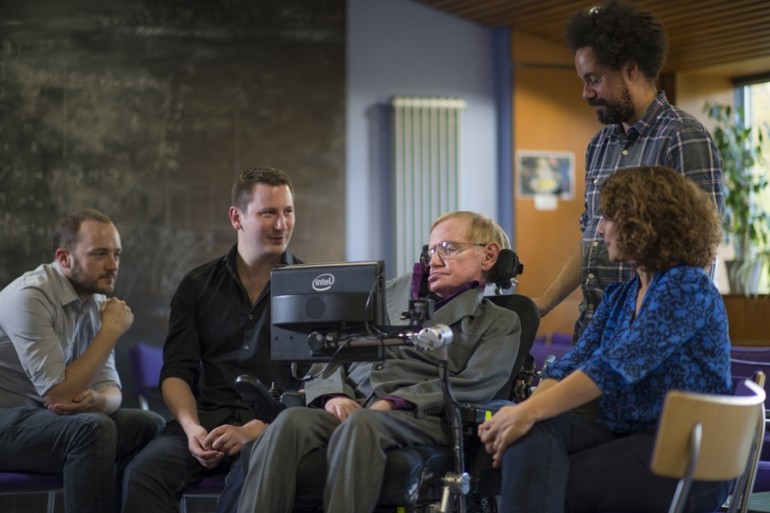
The upgraded version of the software which has permitted the famous astrophysicist Stephen Hawking to communicate for over twenty years will become open source this upcoming January and freely available across the Internet. The latest version has been in development for three years and improves Hawking’s rate of speech tenfold.
“By making this technology freely available, it has the potential to greatly improve the life of disabled people all over the world,” said Hawking, while relaying his words in his signature robotic voice, a feature he chose to retain. “Without this, I would not be able to speak to you today,” said the 72-year-old, who was diagnosed in 1963, at the age of 21, with a motor neuron disease related to amyotrophic lateral sclerosis (ALS), and given two years to live.
Hawking’s communication system is reliant on a cheek sensor that detects muscle movements and conveys the information to an infrared switch mounted on his glasses; this in turn helps him select the computer characters and type. The system is over 20 years old, and was developed by a group within Intel Labs that was established by Gordon Moore himself, many years ago. It was reliable; enabling the theoretical physicists to continue teaching at Cambridge University even after the diminished use of his hand rendered his previous hand switch-based system moot. Yet, as Hawking had aged, he found that his cheek muscle could only control the system for a limited time per day, sometimes declining to a type rate as slow as a single word a minute.
The new system, called Assistive Context Aware Toolkit (ACAT), rectifies this issue by reducing the number of moves needed to spell out words while simultaneously permitting the use of new functions, such as sending e-mail attachments. By incorporating predictive text, Hawking now need only key 15-20 percent of the characters in any document, effectively doubling his overall writing capacity and improving his common task performance tenfold, stated Intel in a statement. The key to accurately predicting his speech lie in the digitization of all his work, courtesy of British company SwiftKey. Nevertheless, ACAT cannot eliminate dependency on the cheek muscle, but it does drastically reduce how often Hawking needs to use the muscle to control his computer.
Although Hawking was given the option to upgrade the interface, he chose to retain the retro appeal of the system he had spent 20 years familiarizing himself with. Similarly, Hawking insisted on retaining the robotic voice instead of swapping to naturally sounding British voice, claiming it was his trademark. “Medicine has not been able to cure me, so I rely on technology to help me communicate and live,” states Hawking during the press conference unveiling the upgrades.
Source: Intel
Advertisement
Learn more about Electronic Products Magazine





